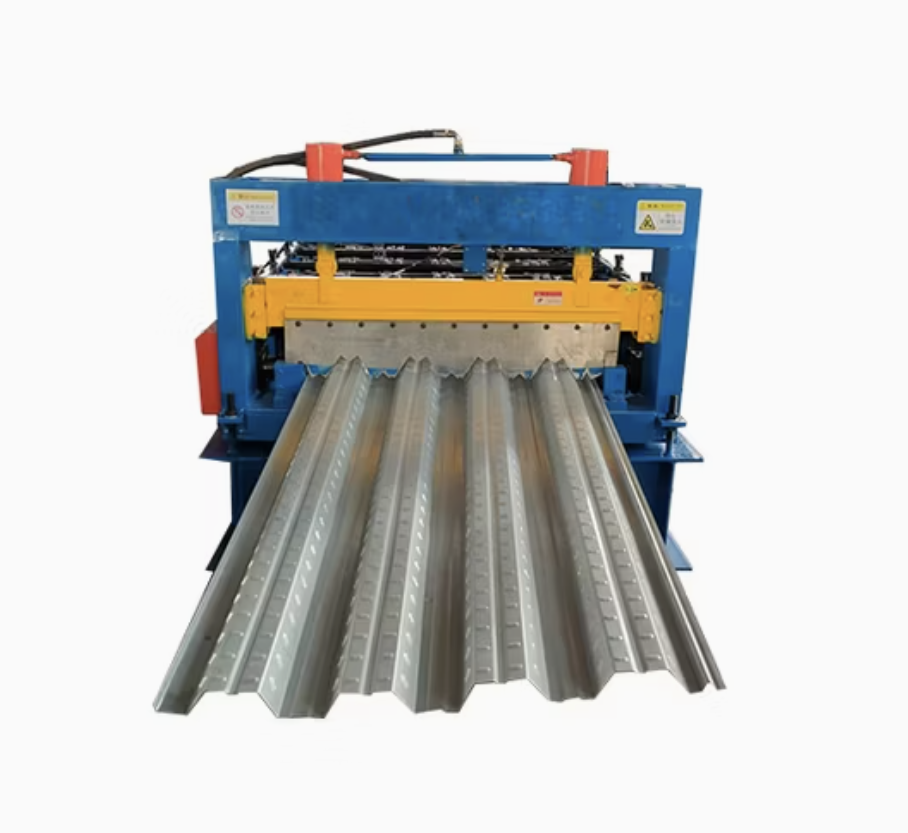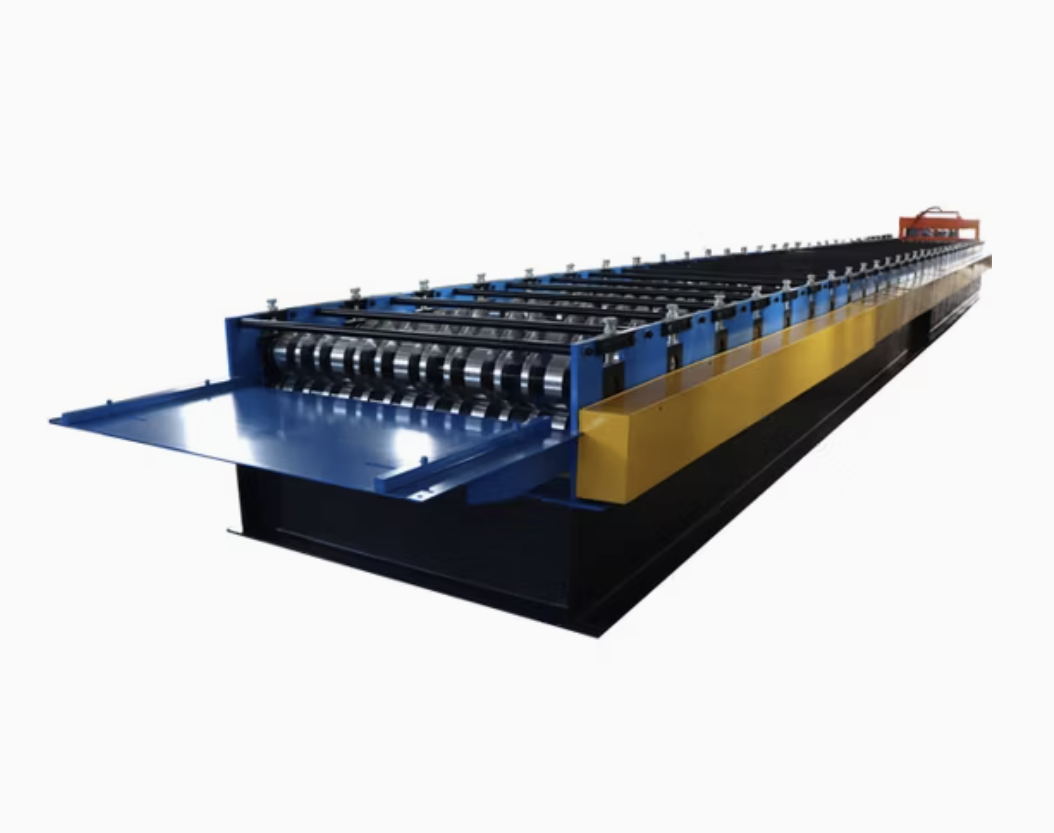To express an interest in this machine please submit the form below.

Not Sure What Machine You Need?
Select Your Profile, We'll Match It
Choose your desired profile drawing, and let Machine Matcher connect you with the best roll forming machine tailored to your needs.
Browse Profiles


A B Decking Roll Forming Machine is a specialized machine used to produce B decking, commonly applied in commercial construction and industrial projects for flooring, roofing, and structural reinforcement. Known for its efficiency and durability, the B decking roll forming machine creates panels with consistent dimensions, high load-bearing capacity, and enhanced corrosion resistance, meeting the demands of high-performance building requirements.
The B decking roll forming machine processes metal coils, typically steel, and shapes them into specific deck profiles through a series of precision rollers. These rollers are designed to gradually shape the metal into a robust decking profile while ensuring minimal material waste and maintaining uniform quality. The machine can be customized for different deck heights, widths, and gauges according to project requirements.
B decking is ideal for creating composite floors in multi-story buildings. When combined with concrete, B decking acts as reinforcement, providing additional strength and load capacity. Due to its structural integrity and fire resistance, B decking has become a staple in construction, especially in projects needing sustainable and long-lasting building materials.
The setup and installation process includes:
Routine maintenance is essential for prolonging machine life and sustaining performance. Maintenance tasks include:
Q1: What materials are compatible with the B Decking Roll Forming Machine?
A1: The machine is typically compatible with galvanized steel and coated steel, with thicknesses ranging from 0.8 mm to 1.5 mm. This range can vary depending on the model.
Q2: What are the benefits of using a B Decking Roll Forming Machine in construction?
A2: The B decking produced by this machine offers structural reinforcement, high load-bearing capacity, and enhanced fire resistance. It is ideal for multi-story buildings and industrial applications where strong, reliable flooring and roofing solutions are required.
Q3: Can the machine profile size be adjusted?
A3: Yes, the machine can be customized to produce different deck heights, commonly 1.5” and 2”. Adjustments can also be made for deck width, depending on project requirements.
Q4: How fast can the machine operate?
A4: The machine can reach speeds of up to 20-40 meters per minute, depending on the model and thickness of the material, making it suitable for high-volume production.
Q5: What safety features are included with the machine?
A5: The machine is equipped with safety guards, emergency stop buttons, and protective enclosures. Operators are also trained in handling the machine safely, and additional sensors may be added based on requirements.
Q6: Is it possible to monitor the machine remotely?
A6: Yes, the machine can be equipped with a remote PLC control system, allowing operators to monitor and control production offsite if needed.
Q7: What are the maintenance requirements for this machine?
A7: Routine maintenance includes lubrication of moving parts, inspections, cleaning, and periodic calibration. Regular diagnostics for the PLC system and prompt replacement of any worn components are also advised for optimal performance.
Q8: How does this machine contribute to sustainable construction practices?
A8: B decking is often made of recycled steel and contributes to sustainable construction by enhancing building longevity and reducing the need for additional structural support materials. Additionally, the machine's design minimizes material waste, making it an environmentally friendly choice.
Copyright 2025 © Machine Matcher.